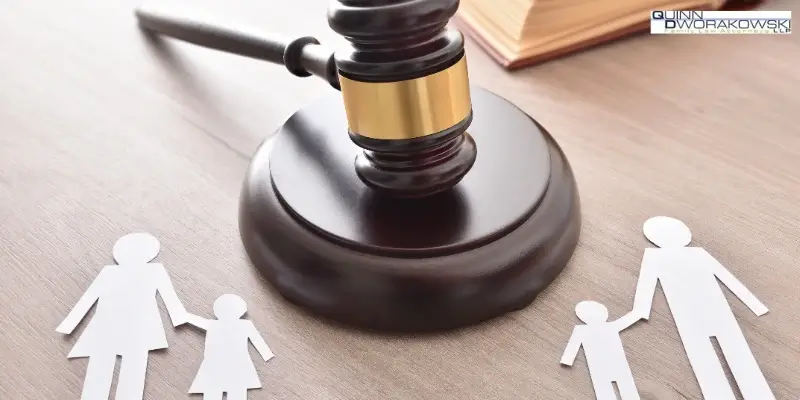Reasons for an Emergency Child Custody Order in California


In California, child custody matters are typically resolved through standard court proceedings that can take time to schedule and finalize. However, when immediate action is necessary to protect a child’s safety or well-being, California family courts can issue an emergency child custody order. So, what are the reasons for an emergency child custody order in California?
This type of order is designed to provide immediate, temporary relief in cases where a child’s health or safety may be at risk.
What Is an Emergency Child Custody Order?
An emergency child custody order, sometimes referred to as an ex parte custody order, is a court’s temporary ruling to immediately alter or restrict a child’s custody arrangement in response to pressing concerns. This order can be requested by a parent, guardian, or other concerned party who believes that a child is in immediate danger and requires swift intervention.
Emergency orders are typically granted for a short duration, giving the court time to later assess the situation during a full hearing. In the meantime, this measure aims to protect the child’s safety.
For a judge to issue an emergency custody order in California, the applicant must provide compelling evidence that the child faces immediate harm or danger. The burden of proof lies with the party requesting the emergency order, as these orders can significantly disrupt established custody arrangements.
Common Reasons for an Emergency Child Custody Order in California
- Threat of Physical Harm or Abuse
One of the most common reasons for granting an emergency custody order is when there is a credible threat of physical abuse toward the child. California courts prioritize a child’s safety and well-being above all else, so any immediate risk of harm from a parent, family member, or caregiver is grounds for urgent intervention.
- Sexual Abuse Allegations
Allegations of sexual abuse are also grounds for an emergency custody order. This type of harm can have severe and lasting effects on a child’s mental, physical, and emotional health. If one parent or guardian has reason to believe that their child is being sexually abused by the other parent, an immediate appeal to the court is often necessary.
- Drug or Alcohol Abuse by a Custodial Parent
Substance abuse, whether it involves drugs or alcohol, can create a hazardous environment for a child. If a parent’s substance use negatively affects their ability to care for or protect the child, an emergency custody order may be warranted.
- Abduction or Threat of Relocation
In some cases, one parent may attempt to take the child away from their legal residence without proper consent or legal authorization, constituting an abduction. This is particularly common in high-conflict custody disputes. Additionally, a parent may threaten to move the child out of state or even out of the country without the other parent’s consent.
- Neglect or Unsafe Living Conditions
Neglect can be just as harmful as physical abuse, and it is grounds for an emergency custody order in California. Situations where a child is left without adequate food, shelter, medical care, or supervision may justify immediate intervention by the court.
- Severe Emotional or Psychological Harm
Children can also suffer from severe emotional or psychological harm in custody situations. This may arise if a parent uses abusive language, manipulation, threats, or other tactics that negatively affect the child’s emotional health. Such actions may cause long-term trauma and developmental issues.
The Process of Obtaining an Emergency Child Custody Order
Obtaining an emergency child custody order in California involves several steps and requires an understanding of the legal process. These steps include:
- Filing a Request. The concerned party must file a request for an emergency hearing, typically in family court. This filing includes detailed documentation and evidence supporting the claim of immediate harm to the child.
- Providing Evidence. Documentation can include medical reports, police records, statements from witnesses, or any other credible sources that substantiate the claims. The court reviews this information to determine if there is sufficient cause for an emergency order.
- Attending the Hearing. Unlike standard custody hearings, emergency hearings may take place quickly, sometimes even on the same day. The judge evaluates the evidence and determines whether immediate action is necessary to protect the child.
- Temporary Ruling. If the judge issues an emergency custody order, it typically remains in effect for a short period until a formal hearing can be held to thoroughly assess the situation. This is to ensure the child’s protection while still providing due process.
- Follow-Up Hearing. After the emergency order is in place, the court schedules a follow-up hearing where both parties can present additional evidence and arguments. At this stage, the judge may decide to make permanent adjustments to custody arrangements, or return to the original custody agreement if it’s deemed safe.
Understanding the Limitations of Emergency Custody Orders
While an emergency child custody order provides immediate relief, it is only a temporary solution. These orders are designed to address urgent risks and typically require a follow-up hearing where more permanent arrangements are determined. It’s also important to understand that emergency custody orders should not be used as a tactic in disputes but rather as a genuine measure to protect a child’s welfare.
Misusing the emergency custody order process can have serious repercussions and may impact future custody decisions.
FAQs
Can an Emergency Custody Order Be Issued If Both Parents Live Together?
Yes, if there’s evidence of a significant threat to the child within the shared household, the court can still issue an emergency custody order to protect the child. These orders include temporary restrictions placed on the offending parent until such time that a full hearing can be scheduled. If you need to obtain an emergency custody order, seek legal counsel immediately.
What Should I Do If the Other Parent Falsely Accuses Me to Get an Emergency Order?
If you are wrongfully accused by the other parent, remain calm. Contact your attorney as soon as possible. They can help you to gather evidence of your innocence, including witness statements and documentation to support your case. The court thoroughly examines the evidence, and false claims can damage the credibility of the accused parent.
How Can I Prove Emotional Harm to the Court?
Proving emotional harm can be difficult, but there are resources available to help. Testimonies from mental health professionals, documented changes in the child’s behavior, or observations from teachers can serve as evidence to demonstrate emotional harm. The court takes these testimonies seriously. If you need help gathering the information you need, reach out to your lawyer.
Can an Emergency Custody Order Include a Restraining Order Against a Parent?
Yes, if the situation involves immediate threats or if the offending parent still lives in the home with you and the child(ren), a temporary restraining order can accompany an emergency custody order. This is meant to prevent a potentially dangerous parent from contacting the child or the other parent. Your lawyer can better advise you after reviewing the specifics of your case.
Get Help From Quinn & Dworakowski, LLP
At Quinn & Dworakowski, LLP, we are ready to fight for you and your child during this harrowing time. We can advocate on your behalf and ease the burden while you focus on being there for your little one. Contact us today to schedule a consultation.



